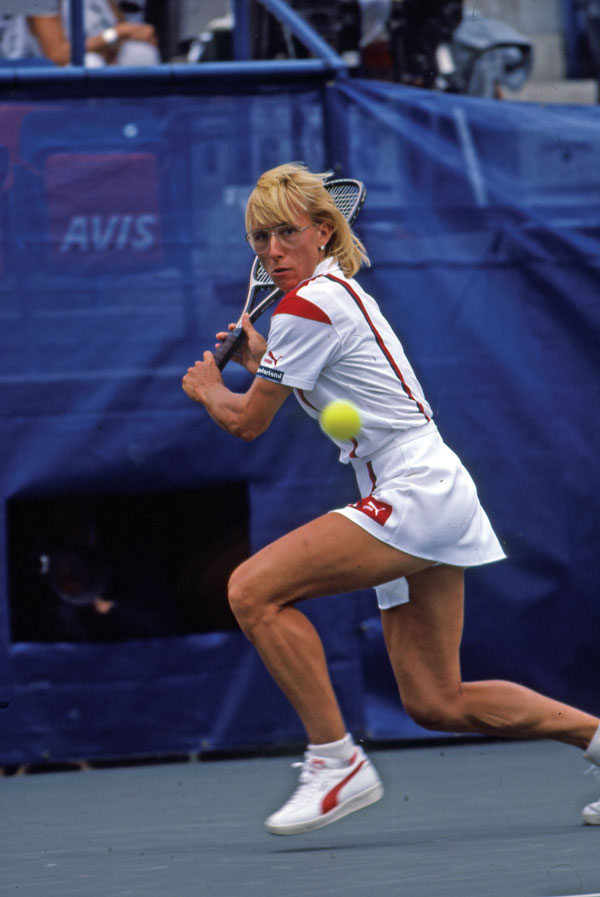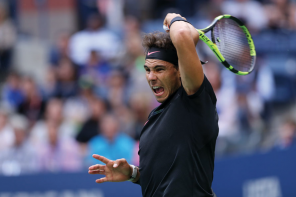Many of the great sports anniversaries being celebrated this summer are the anniversaries of great rivalries:
The 40th anniversary of the Triple Crown showdown between the victorious Affirmed and his rival, Alydar — the only horse to finish second in all three Triple Crown races.
The 40th anniversary of the New York Yankees’ comeback against the Boston Red Sox from 14 ½ games out of first place to win a one-game playoff on a Bucky Dent homer.
The 10th anniversary of Rafael Nadal’s takedown of perennial Wimbledon champ Roger Federer in a taut seesaw match, 6—4, 6—4, 6—7 (5—7), 6—7 (8—10), 9—7. It’s the subject of the insightful new Tennis Channel documentary streaming on The CW, “Strokes of Genius: Federer, Nadal and the Greatest Match Ever Played,” based on L. Jon Wertheim’s book of the same title (Houghton Mifflin Harcourt, 2009).
But what makes Federer-Nadal, known to fans as Fedal, a great rivalry? What makes any great rivalry? It’s a question we’ve considered before in July 2012 WAG but one so enticing that we thought the time ripe to revisit it.
Veteran tennis journalist Steve Flink says the charisma of rivalry lies in complementary opponents, as in righty Federer’s elegant serve-and-volley game versus southpaw Nadal’s fiery baseline approach. Flink’s favorite rivalry, Chris Evert and Martina Navratilova, offered similarly contrasting styles — the emotional lefty Navratilova with her big serve, the steely right-hander Evert as a counterpuncher. Each won 18 Slam singles titles. They alternated as number one and number two in the WTA rankings for all but 23 weeks from 1975 to 1987. Indeed, longevity was key to their rivalry as they faced off 80 times.
“You’re only as good as your opponent makes you play,” Navratilova observes in “Strokes of Genius.” “Chris made me a better player, then I made her a better player.”
“She made me a better player,” Evert agrees in the documentary, referring to her retrofitted serve and fitness in the advent of Navratilova, “and I don’t know if anyone else would’ve done that.”
It is the delicious irony of rivalry: You might win more without a rival — Federer’s dominance went virtually unchallenged until Nadal, Novak Djokovic and Andy Murray arrived on the scene — but you might not be as good. It’s the reason, John McEnroe observes in the documentary that he mourned Björn Borg’s retirement in 1983 at the height of their rivalry and continually tried to persuade him to return. (For our money, Borg-McEnroe’s clashes in the 1980 and ’81 Wimbledon finals — which they split, with Borg winning in ’80 and McEnroe in ’81 — were every bit as good as Fedal ’08, just as the intuitive Nadal’s more evenly balanced rivalry with the extroverted but intellectual Djokovic might have the edge over Fedal, in which Nadal has the advantage.)
But just because a rival makes you good doesn’t mean you have to love him — or them. For every Evert-Navratilova — who traveled and lunched together during their careers and still keep in touch constantly, even going antiquing together — there’s Yankees-Red Sox, with players and fans going at one another since the turn of the 20th century. The latest installment — as the teams vie for first place in the tough American League East division — featured a bench-clearing brawl April 11 at Fenway Park after the Bombers’ first baseman/outfielder Tyler Austin was hit by a pitch from the Bosox’s Joe Kelly, possibly in retaliation for Austin spiking Bosox utility player Brock Holt earlier in the game. Slamming his bat into the dirt, Austin charged the mound, precipitating the brawl. The exchange continued a tradition that began 115 years earlier in New York when Boston pitcher George Winter was knocked down and a fight ensued.
Four-legged creatures can go at it like Muhammad Ali and Joe Frazier as well. As laid-back as Affirmed was in the barn, he displayed a matchless will to win on the track, according to Steve Cauthen, the jockey who rode him to immortality. Whenever he sensed the high-strung, aristocratic Alydar trying to pass him, he’d cock an ear and giddyup. It helps explain why he was victorious in seven of their 10 encounters, including the Crown. Those encounters made Affirmed more special than other Crown winners, according to his trainer, Laz Barrera: “Affirmed is greater than Secretariat, or any Triple Crown winner, because only Affirmed had to face Alydar.”
Even Evert and Navratilova went through a period when they were distant rivals. Evert says she quit playing doubles with Navratilova, because Navratilova became a little too familiar with her game. In the early 1980s, basketball player Nancy Lieberman convinced Navratilova that she should be hostile to her rival. Hostility to a rival may work in team sports like basketball, baseball and football, because there rivalry is an abstraction — them versus us. And lots of teammates have your back. But in an individual sport like tennis? In the end, Evert and Navratilova recognized that while they were tennis players on the court, they were human beings off it as well, women who share a love for a game that transcends the years they played it professionally.
It was a question of maturity, Evert says, and realizing that the rivalry is “not affecting your individual legacy. If anything, it’s adding to it. It’s a legacy itself.”





